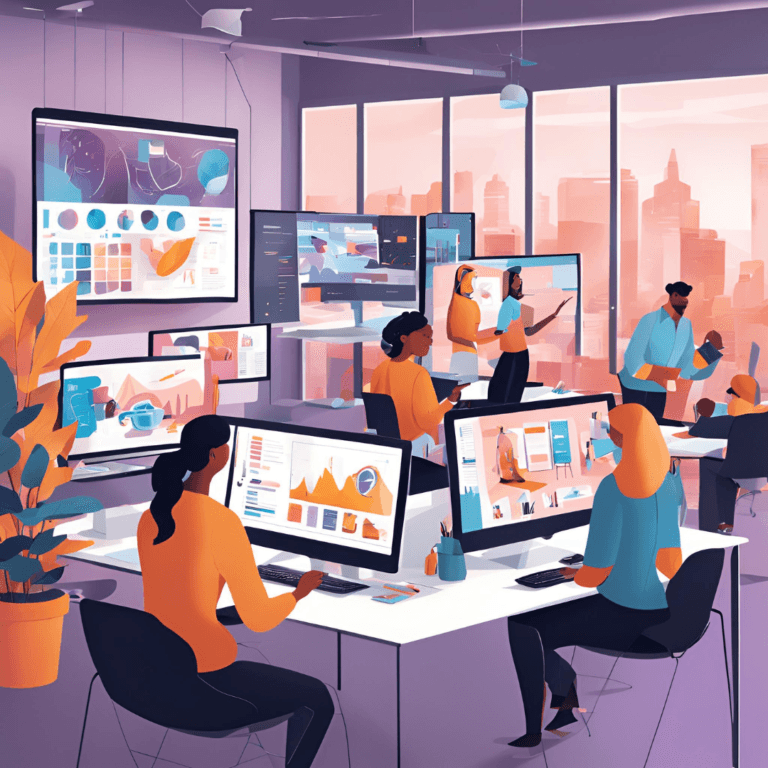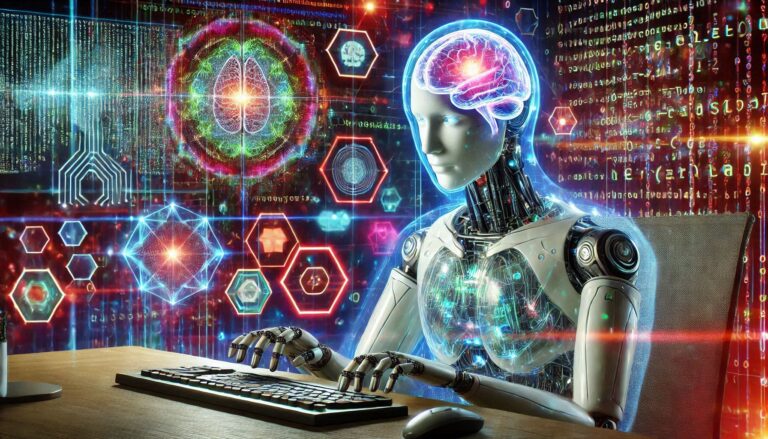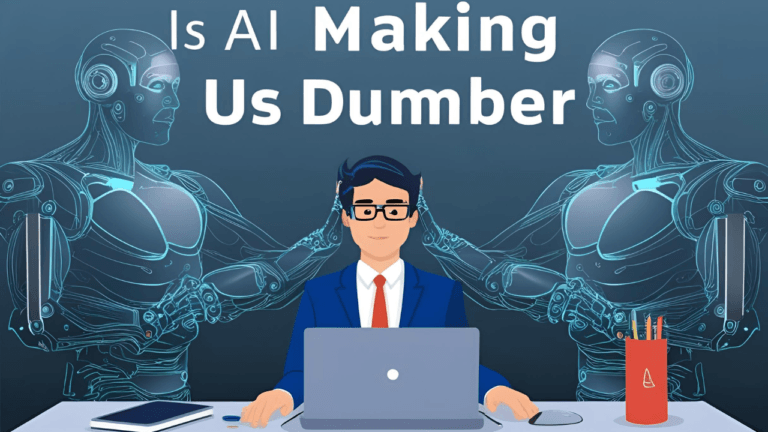🧪 Introduction: When AI Meets the Molecular World
Chemistry has long been a discipline of exploration—but also of inefficiency. Whether it’s drug development, material synthesis, or reaction optimization, traditional chemistry often relies on trial-and-error processes that can be slow, costly, and hit-or-miss. A single molecule may take years to develop, with countless failed iterations along the way.
Enter AI in chemistry, a powerful solution to these long-standing bottlenecks. With the ability to analyze complex chemical datasets, predict molecular behavior, and optimize reaction conditions, AI is becoming an indispensable tool for modern chemists.
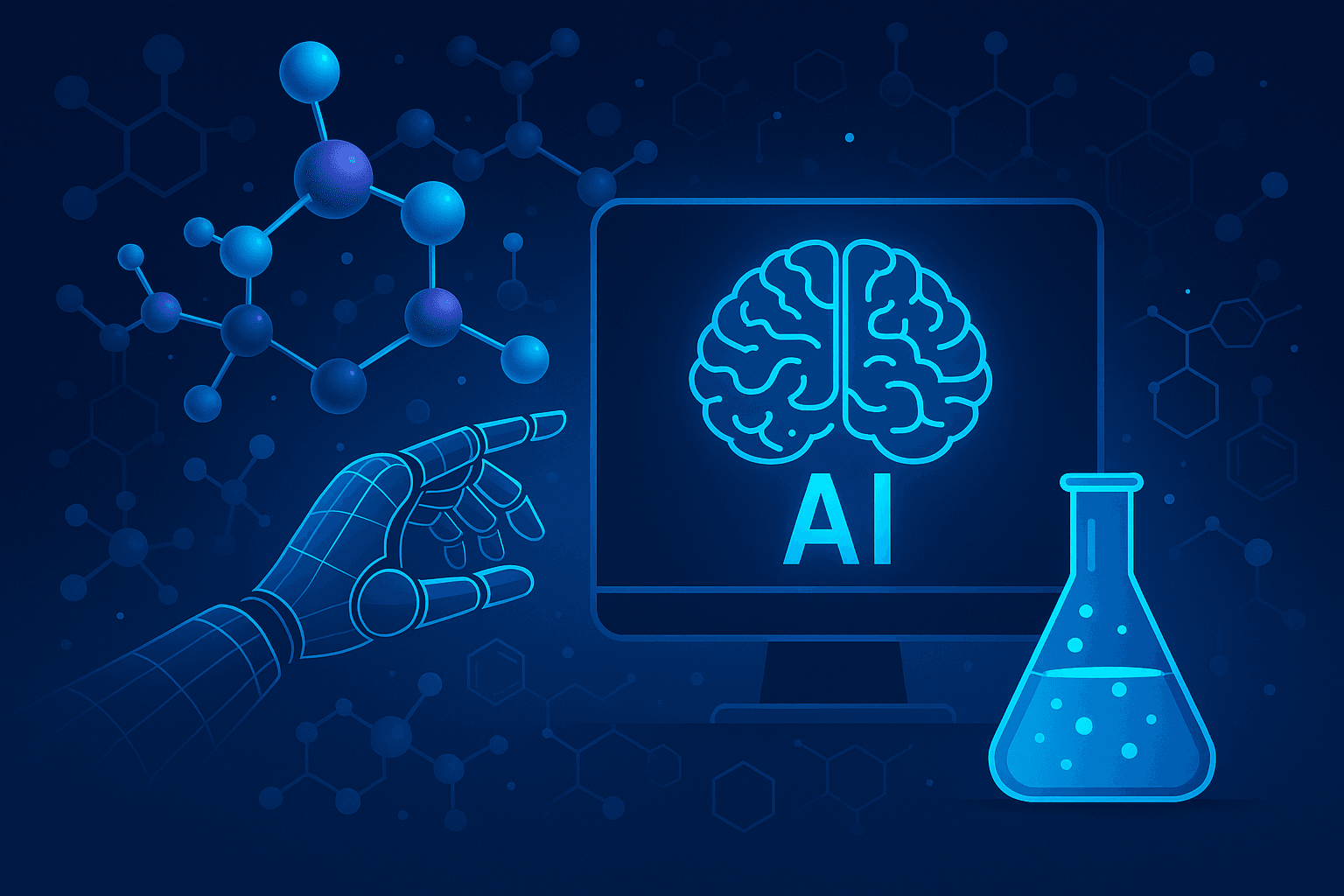
By applying machine learning to vast datasets of molecular structures and reaction outcomes, chemistry AI can identify hidden patterns, uncover novel compounds, and drastically speed up discovery. We’ve already seen real-world breakthroughs, such as:
- Engineered through ESM3, EvolutionaryScale’s advanced language model, esmGFP represents a breakthrough in AI-generated protein design.
- The accelerated creation of mRNA vaccines, where AI helped model protein folding and predict immune responses
- AI-guided development of new catalysts that reduce emissions and improve efficiency in industrial processes
This isn’t science fiction—it’s the next phase of chemical evolution. As AI reshapes other fields, its impact on chemistry may be the most transformative of all.
🔍 What Is AI in Chemistry? A New Paradigm of Discovery
To understand the Artificial intelligence chemistry impact, we need to break down what it actually involves. At its core, chemistry AI applies data-driven models to understand, predict, and even create chemical behavior and structures.
🧠 Key Technologies:
- Machine Learning (ML): Uses statistical techniques to improve predictions with more data
- Deep Learning: A subset of ML using neural networks for complex pattern recognition—ideal for molecular modeling
- Neural Networks in Chemistry: These models mimic the human brain to learn from chemical reactions, predict molecular properties, or generate entirely new compounds
🧪 Major Applications of AI in Chemistry:
- Synthesis Planning: Predicting optimal pathways to synthesize a target compound
- Molecular Generation: Creating novel molecules that meet predefined criteria (e.g. drug-likeness, toxicity, stability)
- Property Prediction: Forecasting a molecule’s solubility, reactivity, toxicity, or binding affinity using trained models
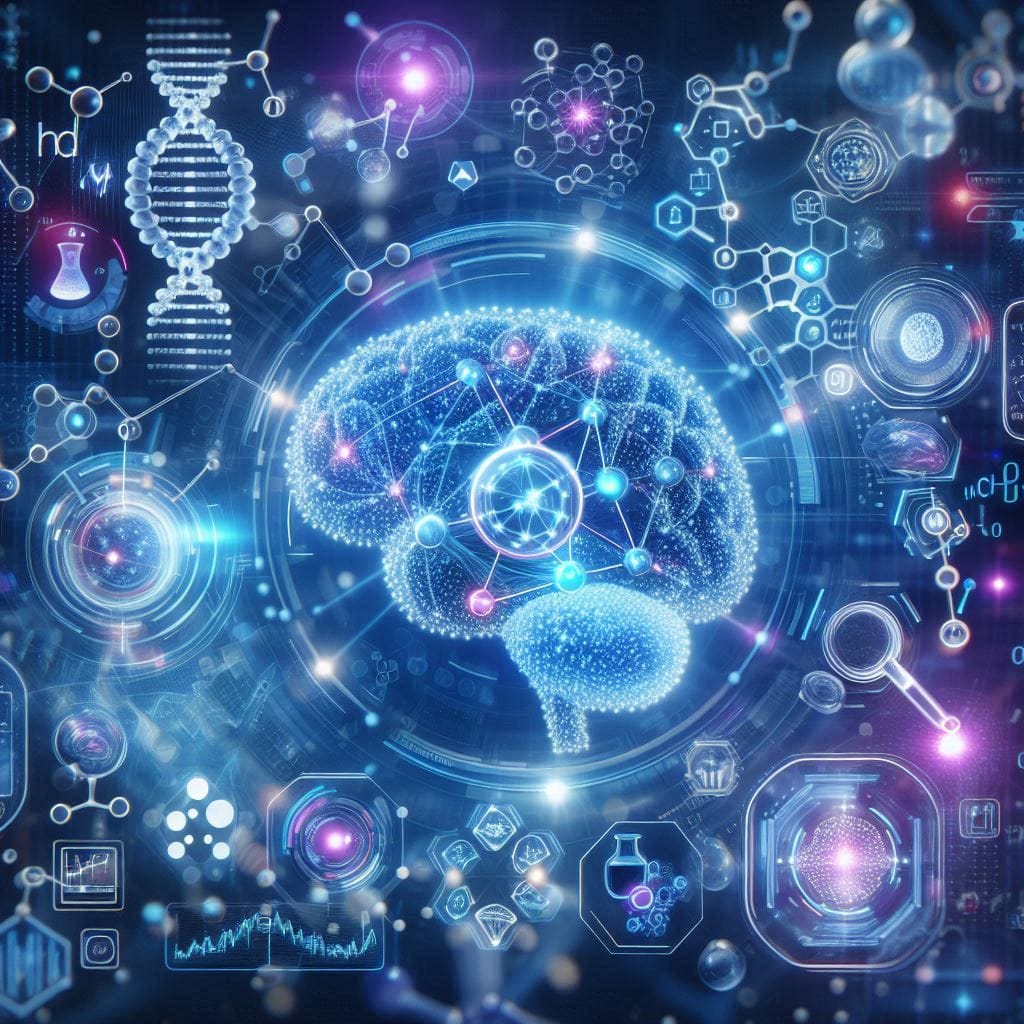
🌐 Notable AI Platforms Driving the Revolution:
- AlphaFold by DeepMind: Predicts 3D protein structures from amino acid sequences with remarkable accuracy
- ESM3, developed by EvolutionaryScale with support from Meta, is a generative language model engineered to create entirely new protein structures like esmGFP.
- IBM RXN for Chemistry: An AI tool that enables chemists to input a target molecule and get AI-predicted synthetic routes
These tools demonstrate the artificial intelligence chemistry impact at a scale once unimaginable. They enable researchers to explore chemical space more efficiently, reduce lab trial time, and ultimately bring innovations to market faster—from pharmaceuticals to renewable materials.
🧬 How AI Designs Molecules and Predicts Reactions
One of the most groundbreaking abilities of AI in chemistry is its power to imagine the unseen—designing entirely new molecules and predicting how they will behave under specific conditions. This is the domain of generative AI molecules, where algorithms create novel compounds with desirable properties that may have never existed before.
🧪 Simulating and Generating New Compounds
Using large datasets of known molecular structures and properties, deep generative models can create theoretical molecules with predicted biological activity, solubility, or binding affinity. These systems learn chemical grammar the same way language models learn syntax—allowing them to “compose” molecules that fit a specific target profile.
🔁 AI in Retrosynthesis: Planning Reactions Backwards
One of the hardest challenges in chemistry AI is figuring out how to make a compound once you know what you want. AI helps solve this through retrosynthesis—a process where the system starts with a desired molecule and works backward to determine the optimal synthetic route.
🧰 Tools That Make It Happen
- Synthia (MilliporeSigma): Uses a rule-based expert system to generate efficient synthetic pathways
- IBM RXN for Chemistry: A cloud-based tool that takes a product molecule and returns AI-generated step-by-step synthesis routes using neural networks
- Chematica (now part of Merck): Employs a curated database of over 100,000 reaction rules and AI to design efficient and cost-effective routes for compound creation
These platforms don’t just offer possibilities—they simulate feasibility, cost, and scalability, making chemical reaction prediction both smarter and more commercially viable.
💊 AI in Drug Discovery: From Labs to Life-Saving Treatments
Perhaps the most transformative application of AI in chemistry is in the field of medicine. With drug development timelines averaging 10–15 years and costs reaching billions, the pharmaceutical industry is embracing AI for drug discovery to make the process faster, cheaper, and more accurate.
🔍 Real Use Cases
- COVID-19 Drug Development: During the pandemic, AI models were used to screen antiviral compounds, model protein structures (e.g., spike protein folding), and predict drug-virus interactions in days rather than months.
- Cancer Therapy: Companies are now using predictive modeling chemistry to identify compounds that target cancer cells with precision—reducing toxicity to healthy tissue.
- Protein Folding: AI systems like AlphaFold have cracked one of biology’s greatest puzzles—accurately predicting protein structures. This has massive implications for diseases caused by misfolded proteins.
🚀 Key Benefits
- Reduced Cost: By eliminating thousands of unnecessary lab tests, AI significantly cuts research and development expenses
- Faster Trials: AI can identify and prioritize drug candidates that are more likely to succeed in clinical trials
- Improved Accuracy: Chemistry AI models can predict side effects, binding affinities, and off-target reactions before any lab work is done
🧬 Industry Leaders
- DeepMind (Alphabet): Known for AlphaFold, revolutionizing protein structure prediction
- Recursion: Combines high-throughput biology with machine learning to generate large-scale maps of drug-cell interactions.
- Insilico Medicine: Utilizes AI-driven molecular design to create novel therapeutics, with one candidate advancing to Phase 1 trials faster than traditional timelines.
These companies demonstrate how AI for drug discovery is already impacting real patients—and pointing toward a future where new treatments can be discovered, tested, and deployed in a fraction of the traditional time.
🧱 AI in Material Science and Green Chemistry
While much of the spotlight on AI in chemistry is focused on drug discovery, its impact on materials science and green chemistry is just as profound—and arguably more far-reaching in terms of sustainability and industry transformation.
🧪 Designing the Future: Polymers, Batteries, and Catalysts
Using AI in material science, researchers can now model and test thousands of polymers, alloys, and battery materials without ever entering a lab. AI algorithms identify how variations in molecular structure affect key traits like conductivity, flexibility, and strength—leading to the rapid development of materials for everything from electric vehicles to wearable tech.
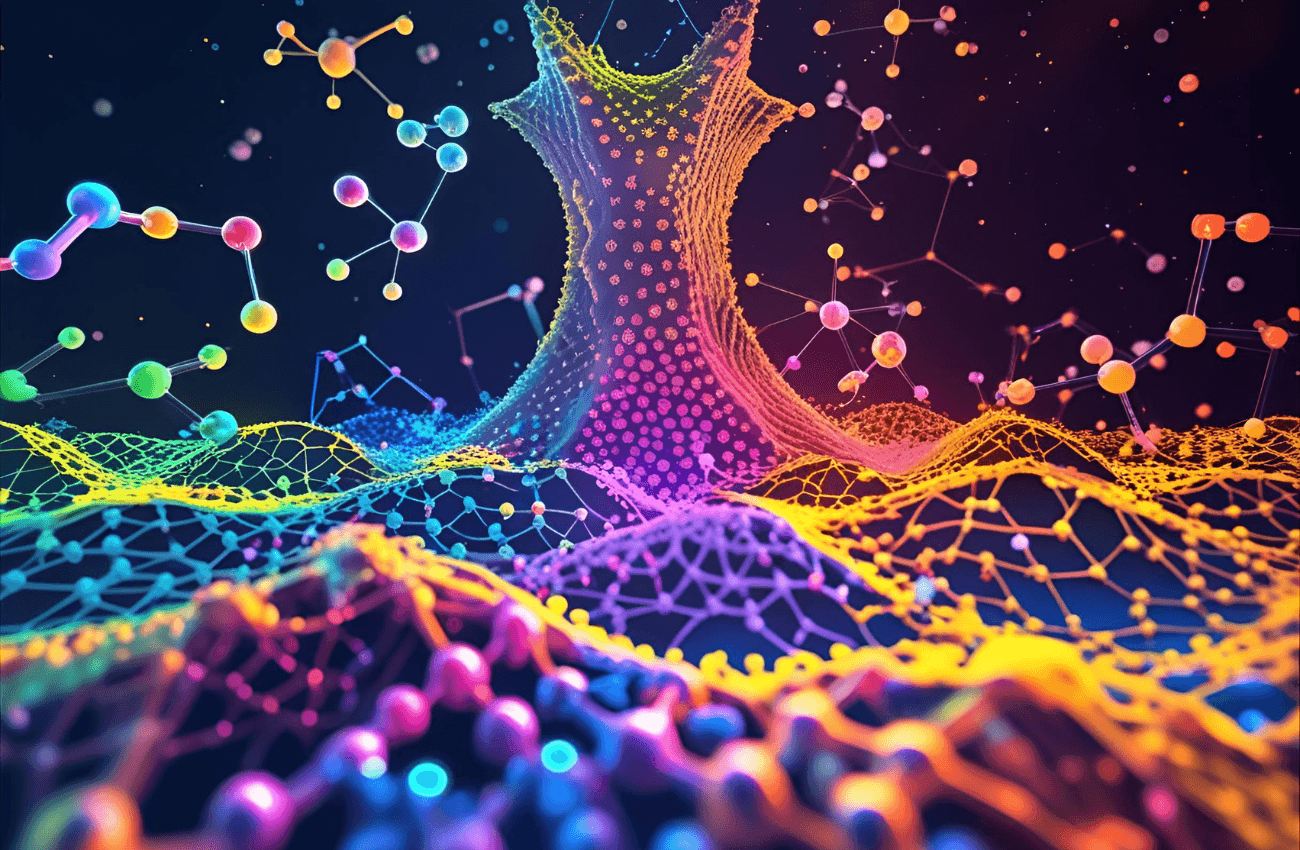
AI in chemical synthesis has also revolutionized catalyst discovery—speeding up the design of highly specific catalytic systems for industrial processes. These catalysts can lower energy usage, reduce waste, and even drive green hydrogen production.
🌍 Sustainable Solutions: Carbon Capture and Biodegradable Alternatives
AI is playing a pivotal role in the fight against climate change by enabling the design of materials for carbon capture, such as metal-organic frameworks (MOFs) or porous membranes. These structures are optimized for absorbing CO₂ with minimal energy loss.
Similarly, generative AI models help create biodegradable plastics by simulating polymer degradation pathways and predicting environmental behavior—something traditional experimentation would take years to accomplish.
🔬 Predicting Stability and Reactivity
Before a material is ever synthesized, AI can predict whether it will be stable under different temperature, pressure, or chemical conditions. This proactive modeling prevents wasted resources on unstable compounds and accelerates R&D timelines significantly.
In short, AI in material science is reshaping how we build the physical world—making it smarter, cleaner, and more efficient from the ground up.
⚠️ Challenges of Using AI in Chemistry
Despite its promise, the integration of AI into chemistry is far from straightforward. From data reliability to ethical risk, the field faces critical challenges that demand attention.
📉 Garbage In, Garbage Out: Data Quality & Volume
AI thrives on data—but in chemistry, high-quality, labeled datasets are scarce and inconsistent. Much of the historical data is locked in PDFs, lab notebooks, or behind paywalls. Even modern experimental data may lack standard formatting, making computational chemistry models vulnerable to inaccuracies.
The result? AI can make faulty predictions if trained on incomplete or biased data—particularly dangerous when working with drug compounds or hazardous reactions.
🤖 Interpretability: Can We Trust the Model?
While deep learning molecular structures can achieve impressive results, their decision-making processes are often opaque. Scientists may find it difficult to understand why a neural network predicted a specific reaction or molecule, making validation and peer review more complex.
This “black box” nature limits AI’s adoption in regulatory-heavy industries, where explainability is as important as accuracy.
☣️ Ethical Risks: The Dark Side of AI in Chemistry
AI doesn’t have ethics—it has objectives. If not properly guided, it could be used to design chemical weapons, synthesize unregulated pharmaceuticals, or create toxic materials with ease. Tools like generative molecule platforms, when misused, can propose synthesis pathways for dangerous substances faster than any human chemist.
That’s why AI in chemistry must be governed by ethical frameworks and access controls, just like any dual-use technology.
🧠 Is AI Chemistry Just Hype? The Academic & Industry Impact
Is the buzz around AI in chemistry just hype, or is there measurable impact? The answer lies in the data—and the data shows that this field is accelerating at breakneck speed.
📈 Rising Journal Impact & Citations
The artificial intelligence chemistry impact factor has climbed rapidly across academic journals. In 2023 and 2024, leading publications such as Nature Machine Intelligence and Chemical Science saw record numbers of AI-chemistry papers, many with unusually high citation rates within the first 12 months of publication. This signals growing academic validation and adoption.
🧪 The Emergence of Hybrid Labs
The industry is witnessing the rise of hybrid labs, where AI models and wet lab experimentation work side by side. These facilities use AI to generate hypotheses or reaction pathways, which are then tested and refined by robotic instruments or human researchers. The feedback loop between computation and benchwork is shortening discovery cycles dramatically.
Pharma giants like GSK and Roche, along with chemical companies like BASF, have integrated AI platforms into their research pipelines—shifting their R&D culture from siloed trial-and-error to data-driven design thinking.
🌐 Open-Access Datasets Fueling the Boom
The field’s explosive growth is also thanks to open chemical databases that provide the lifeblood for AI training:
- ZINC: Contains millions of purchasable compounds for virtual screening
- ChEMBL: Provides bioactivity data crucial for drug discovery models
- PubChem: A vast repository of molecules, reactions, and properties used by both academia and industry
These datasets, when combined with AI tools, make data-centric chemistry not only possible—but scalable.
So no, AI chemistry isn’t just hype. It’s a rapidly maturing discipline, backed by publication metrics, commercial investment, and global collaboration.
🔮 Conclusion: The Future of AI-Driven Chemistry
From simulating reactions to discovering cancer therapies, AI in chemistry is not just accelerating research—it’s reinventing how science is done. What was once limited to brute-force experiments is now guided by generative algorithms, predictive modeling, and neural networks that can think through molecular space at lightning speed.
We’ve explored how AI is transforming:
- AI in chemical synthesis and retrosynthesis
- AI in Drug discovery and protein folding
- Green materials and catalyst design
But what’s equally exciting is who’s driving this change—a global collaboration between chemists, AI researchers, data scientists, and tech companies. Together, they’re forming a new scientific ecosystem where hypotheses are no longer just imagined—they’re simulated, tested, and optimized in silico before touching a drop of reagent.
As AI becomes more interpretable, trustworthy, and accessible, the question isn’t if it will change chemistry—it’s how far it will go.
“What will AI discover next? Maybe the next Nobel-worthy molecule is already hidden in a dataset—waiting to be revealed by code.”
🔧 Glossary
| Term | Definition |
|---|---|
| Retrosynthesis | A method in organic chemistry where a target molecule is deconstructed into simpler precursors using logic-based reverse planning. |
| Generative models | AI systems that create new data—like novel molecules—by learning patterns from existing datasets. |
| Predictive modeling | Using statistical and machine learning tools to forecast the behavior or properties of chemical compounds. |
| Molecular dynamics | A computational simulation technique used to study the physical movements of atoms and molecules over time. |
| Neural networks in chemistry | Machine learning algorithms designed to model complex, nonlinear relationships in chemical systems for tasks like reaction prediction or molecule generation. |
🧪 Curious how AI is reshaping science beyond the lab?
Dive into these related innovations where artificial intelligence meets molecules, minds, and the oceans:
-
AI-Designed Proteins – Explore how generative AI is creating novel proteins that could revolutionize medicine.
-
Hexahydrocannabinol and Future Brain Chemistry – A look into emerging compounds and how AI is decoding their neurological potential.
-
AI in Oceanography – Discover how machine learning is mapping the deep sea and predicting climate patterns.
-
The Rise of Emotion AI – Learn how AI is beginning to understand and interpret human emotions in real time.
Stay inspired by how artificial intelligence is not just accelerating research—but rewriting the very rules of discovery.


